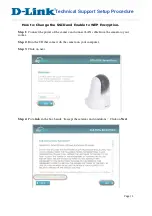
incoming control signals. The outputs of the inverters are logic levels and are sent
to a microcontroller. The microcontroller decodes the logic signals and sends RS-
232 messages to the camera module to enable the selected control function.. The
microcontroller messages to the camera are conditioned by the MAX332 (U5) and
then sent to the camera through J7 pins 5 and 6.
4.1.5 Video Signals
The camera module within the camera assembly generates three separate output
video signals:
Composite Video (NTSC or PAL)
Y Video (Luminance)
C Video (Chrominance)
The composite video from the camera module enters the Universal interface through
J7-1 (with respect to J7-2). The "Y" and "C" video signals from the camera module
enter the Universal Interface Board (UIB) through connector J6. Two pins are for
the two-video signals, while the other three are connected to signal common.
The "Y" and "C" video signal lines are sent to the Mode selector board where they
are protected by fuses before returning (if selected) to the UIB. These lines are then
transmitted through connector J1, pins 7 & 8.
4.1.6 Long Line Amplifier Circuit Operation
Drawing 51-11098 includes a schematic of the video amplifier driver stages. The
video signals from the camera module are received through J3-6. The signals are
applied to one side of capacitor C18 through the gain control R24 to an amplifier
stage U6-A. The output of U6A is delivered through resistor R21, polyswitch RPS2,
and connector J1-2 (with respect to J1-1) to the camera output connector and on to
a remotely located television monitor.
There are camera systems that use a balanced twisted shielded pair for video
transmission as opposed to common coaxial cable. For balanced transmission, two
video signals are required: the normal video line and its invert. Stage U6B is used to
provide this inverted output as described in the next paragraph.
The output of U6A is coupled through C21 and R30 to the input of stage U6B. This
stage is configured as a unity gain inverter so that an inverted duplicate of the output
video is available for systems requiring a balanced video output. This inverted video
output is sent to the Mode Select Board and if selected will return to J1-8 where it is
delivered to the transmission line and on to the remote receiving station.
When driving long cables (typically longer than 500 feet) the attenuation presented
by the cable tends to reduce the video signal arriving at the receiving station.
51-17568 REV B
18
Summary of Contents for CE-X-36
Page 15: ...51 17568 REV B 9...






































